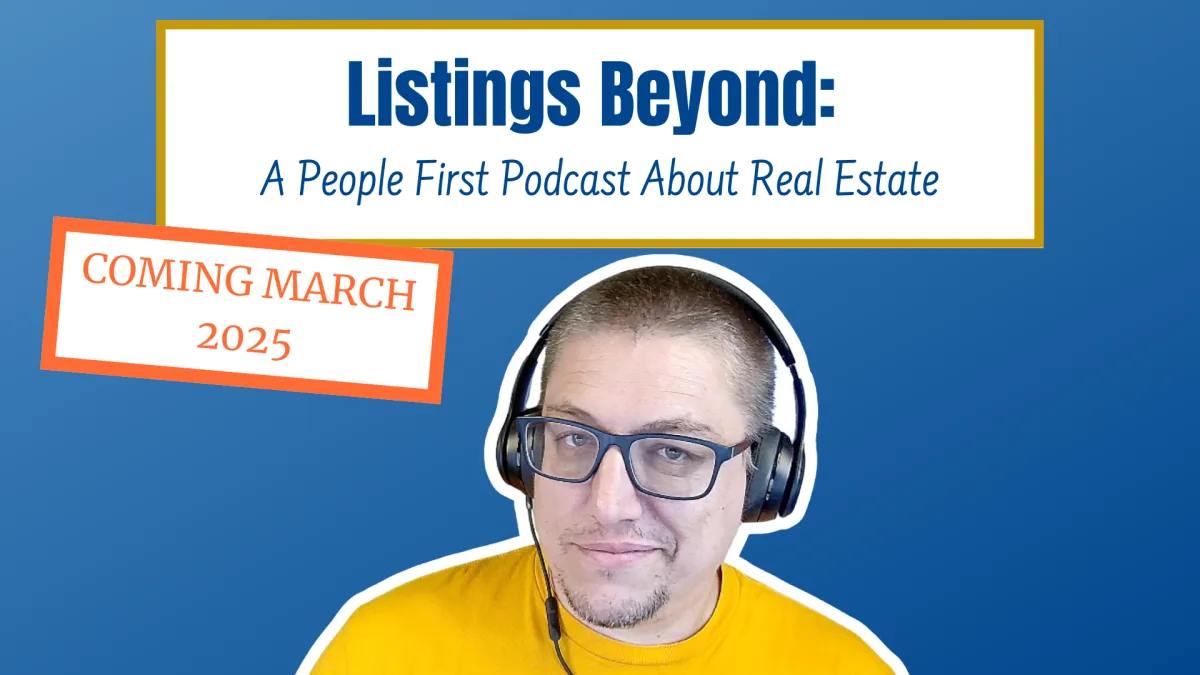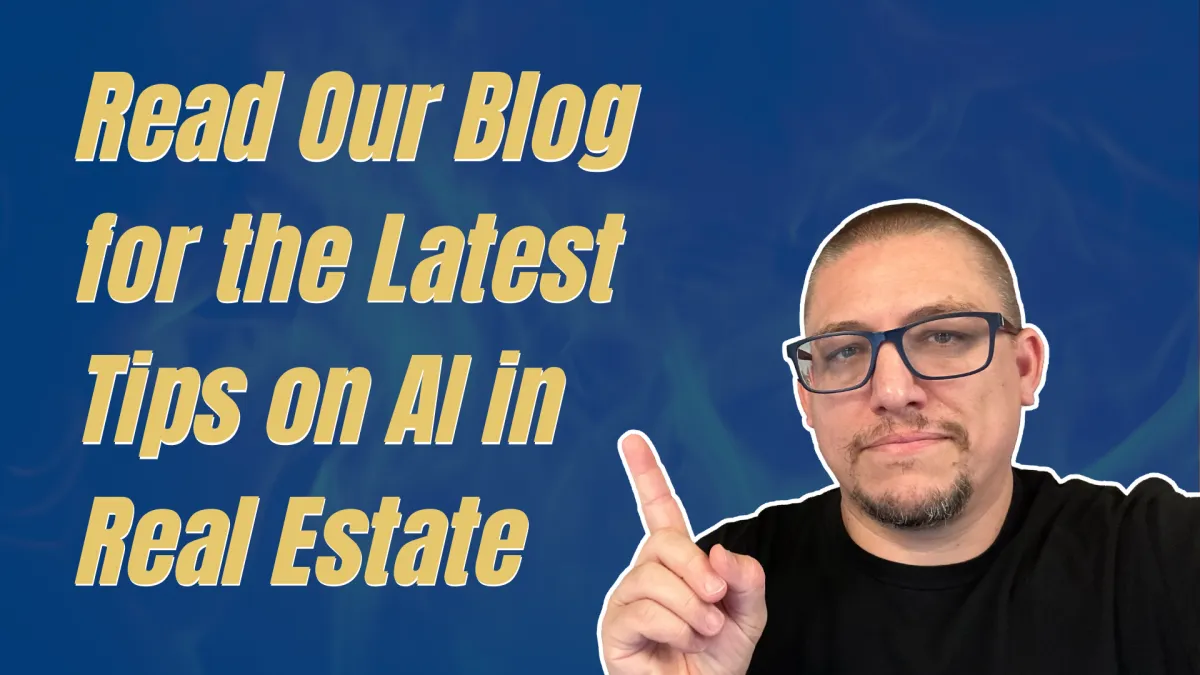
How Can Agents Scale Their Systems Thoughtfully?
You're closing deals, which is great, but every new client adds another plate to spin. You know you need to grow, but the idea of just doing more feels like a recipe for burnout. The real question is how can agents scale their systems thoughtfully—integrating tools like ai agents—to create a business that gives you more freedom, not just more work.
It is a challenge every successful agent faces, moving from frantic activity to strategic growth. This is where you learn to build a foundation that supports your ambitions without causing chaos, using ai agents and smart processes to prevent the explosive growth of your business from overwhelming you.
Unlock your potential with AI-powered solutions tailored to your real estate needs. Save time, grow faster, and work smarter. Schedule your discovery session now at lesix.agency/discovery.
What Does Thoughtful Scaling Even Mean?
How can agents scale their systems thoughtfully? Let's clear something up right away. Scaling is not just about getting bigger or busier. Anyone can do that. Thoughtful scaling is about growing your capacity to handle more business efficiently, without sacrificing service quality or your own sanity.
Haphazard scaling happens when you react to problems. You buy the shiny new software everyone is talking about or hire a person in a panic because you are drowning. It often creates more problems than it solves and leads to a fragile, inefficient structure that cannot handle increasing workloads.
Thoughtful scaling is proactive. It is about intentionally building a business that can handle double the clients with only a small increase in your personal effort. The goal is to build a machine that works for you, allowing you to focus on high-value activities while your systems handle the rest.
How Can Agents Scale Their Systems Thoughtfully? Step 1: Audit Your Current Systems (The Brutally Honest Look)
You cannot chart a course to your destination if you do not know where you are starting from. Before you add anything new, you must get a clear picture of what is happening in your business right now. This step is not glamorous, but it is absolutely critical for long-term success.

Document Everything You Do
Take a few days and map out your entire process. I am serious, from the moment a new lead comes in to the five-year post-closing anniversary email you want to send. Write it all down, documenting every action and decision point.
Think about the main stages. You probably have a system for lead generation, a process for initial follow-up, steps for transaction management, and a plan for staying in touch after the sale. Document what you actually do, not what you think you should be doing, to get a realistic baseline of your current ai operations.
Identify the Bottlenecks
Once it is all on paper, you can see the cracks. Where do things get stuck? What complex tasks make you want to pull your hair out? These are your bottlenecks, and they are choking your growth.
Is it manually entering new contacts into three different places? Is it forgetting to follow up with a lead because they were not in your calendar? According to a report from Inman on agent follow-up, a lack of systems for follow-up is a major reason agents lose business. This is where your opportunity for thoughtful scaling and integrating ai solutions begins.
Step 2: Choose the Right Technology Foundation
Technology should be a lever, not a burden. The right tools can automate repetitive tasks and give you superpowers. The wrong tools just add complexity, monthly expenses, and increase computational demands on your workflow.
Do not fall for the trap of thinking one piece of software will solve all your problems. Instead, think about building a core tech stack with a scalable architecture where each piece has a specific job and they all work together. A strong ai infrastructure is fundamental to building a business that can handle increased data volumes gracefully.
The Core Three: CRM, TMS, and Marketing Automation
For most agents, the foundation rests on three pillars. Your CRM, or Customer Relationship Management software, is the brain of your operation. It holds all your contacts, notes, and communication history, letting you build deep relationships at scale with robust data management.
Your TMS, or Transaction Management System, is your deal workflow. It keeps every detail, document, and deadline for your active deals in one place, which helps you stay compliant and on track. Lastly, your marketing automation tool is your voice; it nurtures your database with valuable content while you are busy serving clients, acting like a preliminary ai agent for your marketing efforts.
The National Association of REALTORS® Technology Survey frequently shows that CRM software is one of the most valuable tools for agents, directly impacting their success. These modern ai systems often incorporate machine learning to analyze user interactions and predict client needs.
How to Select the Right Software
When picking tools and AI systems, think integration. Can your lead generation source send contacts directly to your CRM? Can your CRM kick off a workflow in your TMS when you get a signed contract? Tools that talk to each other save you from soul-crushing data entry and improve data quality across the board.
Also, think about your future. A tool might be cheap now, but if you outgrow its features in a year, you will have to go through the painful process of switching. Pick systems that can grow with you and have the ai capabilities to handle increasingly complex tasks as your business expands.
Your infrastructure based on these core principles enables systems to handle increasing demands without faltering. Implementing robust security measures helps protect sensitive client information, such as financial details or even patient data in specialized real estate niches. Efficient data collection and top-tier storage solutions are necessary to support large datasets for analytics and AI models.
Step 3: Scale Thoughtfully with People
You will eventually reach a point where technology alone is not enough. You can automate tasks, but you cannot automate relationships or high-level strategy. This is when you need to scale with people.
Hiring is one of the biggest steps an agent can take. Done thoughtfully, it can multiply your results. Done poorly, it can be a disaster that drains both time and money. Proper resource allocation from the start is vital.
When to Make Your First Hire
The right time to hire is not just when you are busy. It is when you consistently find yourself spending time on tasks that are not generating income. If you are spending hours on paperwork instead of on the phone with potential clients, you are not busy; you are capped.
Your first hire should take these non-income-producing activities off your plate. A transaction coordinator or an administrative assistant are common first hires for a reason. They free you up to do what you do best: connect with people and close deals.

Systems for Your Team
You cannot simply hire someone and expect them to be a clone of you. That is a setup for frustration. This is why the process audit you did in Step 1 is so important for building out your team.
That audit becomes the foundation for your training and your Standard Operating Procedures (SOPs). You can create simple checklists and video walkthroughs that show your new hire exactly how you want things done. This documentation serves as crucial training data, making your team effective faster and giving you a predictable result every time.
Establishing clear roles and responsibilities from day one is also important. When your team members understand their part in the larger system, they can operate independently and efficiently. This clarity reduces friction and allows the entire operation to run more smoothly.
Step 4: Systematize Your Client Experience
Your reputation is your most valuable asset. A scalable business does not just do more deals; it delivers an amazing client experience every single time. Consistency is what builds a brand that people trust and refer.
Research consistently shows that a majority of an agent's business comes from repeat clients and referrals. A recent NAR report shows that 68% of sellers found their agent through a referral from a friend or family member or used their agent from a past transaction. This highlights the value of maintaining high standards.
To make this happen, you need systems for your service. You can organizations implement a customer service AI to handle initial inquiries and provide instant answers to common questions. These sophisticated AI agents work around the clock, improving response times and client satisfaction.
Create detailed checklists for every major milestone in the client journey. What happens during a buyer consultation? What are the 30 steps you take from a signed listing agreement to a successful closing? When clients feel cared for and informed, nothing slips through the cracks.
Furthermore, when organizations deploy agentic systems, it's crucial to focus on ethical AI. This involves bias detection and bias mitigation practices to ensure all clients are treated fairly. Using diverse data to train your AI models helps prevent skewed outcomes and reinforces your commitment to equitable service.
Step 5: Measure and Refine for Optimal Performance
Thoughtful scaling is not a one-time project; it is a continuous process. You must build a feedback loop into your business so you can see what is working and what is not. You do this by tracking a few key numbers, also known as Key Performance Indicators (KPIs), to guide your performance optimization efforts.
You do not need to track a hundred different things. Just focus on a few metrics that give you a real-time pulse on the health of your systems. This practice of tracking metrics is essential for handling increased data volumes and workloads effectively.
Regular audits of your systems and processes are a must. This allows you to identify new bottlenecks that may have formed as your business has grown. It also provides an opportunity to reassess your technology and team structure, ensuring they still align with your goals for optimal performance.

Review these numbers weekly or monthly. When you see a number you like, dig in to understand why it is working and see how you can do more of it. If you see a number going in the wrong direction, it is an early warning signal that a system needs to be fixed or that load balancing is required to distribute work more evenly.
This approach transforms your business from one based on guesswork to one driven by data. Analyzing large datasets, from lead sources to closing timelines, can reveal powerful insights. These insights fuel a cycle of continuous improvement, making your scalable AI systems even more efficient over time.
Some advanced systems even leverage natural language processing. By analyzing the natural language in emails and client feedback, you can gain deeper insights into their needs and sentiment. This technology helps protect your brand reputation by flagging potential issues before they escalate.
Conclusion
Growing a real estate business can feel like you are either standing still or sprinting toward a cliff. It does not have to be that way. The path forward is not about working harder or just buying more stuff; it is about being deliberate.
By first auditing what you have, then layering on the right technology and people, and finally, systematizing the client experience, you build a business that is both profitable and sustainable. These are the building blocks of a company that is prepared for growth. This is how systems scale effectively, giving you something that can grow with your dreams.
Ultimately, learning how can agents scale their systems thoughtfully is the difference between building a great business and just building yourself a stressful job. You create a powerful engine for success, driven by smart systems, dedicated people, and a relentless focus on improvement.
Ready to take your real estate success to the next level? Schedule your discovery session today at lesix.agency/discovery. Stay ahead with tips and insights—subscribe to our newsletter at lesix.agency/newsletter.






